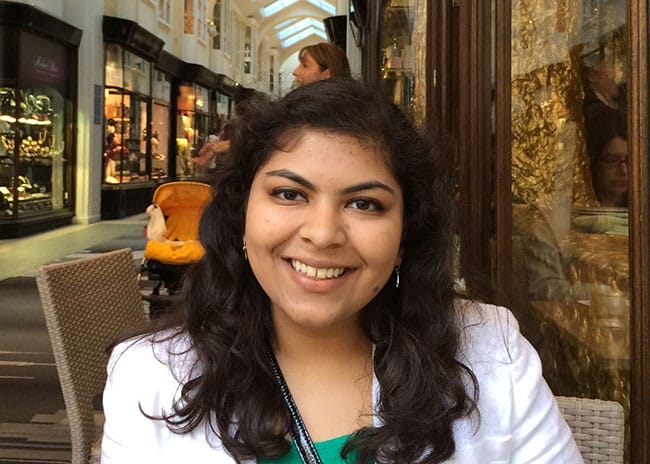Saloni Gupta was introduced to microfinance through her high school’s social impact club in San Jose, Calif., and as she remembers it, she was so enthused with the idea that she went to her parents to donate some money. “Give how much money to whom?” was their response to paraphrase it. They declined. Gupta felt strongly enough about loaning to entrepreneurs around the world to raise her own money—dipping into her savings, as well as earning cash through her own handicrafts business. She recalls her first investment well—a microloan to a woman in Ghana, who used it to buy flour for her bakery.
Since 2010, Gupta has made over 400 loans through the same microfinance platform, Kiva. She’s never added any more money into her “pot”; when repayments come in from the lendees, she always just gives out new loans—in increments of a few dollars up to $1,000.
“It creates this perpetual cycle of giving,” she says.
Since, Gupta has also gotten more involved with Kiva beyond just being a lender. Her next step began, like her first step into microfinance, with her taking the initiative. As a 16-year-old junior in high school in 2010, she decided to drop in on a Kiva event in San Francisco, and she so impressed the staff that they offered her an internship. She continued working with Kiva through her senior year, focusing on helping to bring the organization’s microfinance concept into more classrooms and communities. Kiva institutionalized microfinance educational materials for teaching curricula, club toolkits and educational videos—programs that Gupta had helped expand as an intern.
The programs helped to form the basis of what’s now called Kiva U. Gupta serves on the Kiva U advisory board, along with other students and teachers from around the country. Since coming to Wharton in 2011, she has informally assisted Kiva in piloting the program, promoting it through media outreach and community speaking events. The result is a formal platform that allows school and neighborhood based microfinance clubs to communicate with one another and with Kiva. Since its launch in August 2013, Kiva U has expanded to nearly 60 high schools and 67 college campuses across the U.S.—and in the process has become a teaching tool for social science, personal finance and self-reliance. The effort adds up to a total of 21,000 members and 66,000 microloans worth $4.8 million. This does not include an additional $450,000 contribution made by Citi Community Development and Microfinance to support Kiva U itself.
Now a senior at Wharton and president of Penn’s Microfinance Club, Gupta does not say that her work is done.
“It’s something that I’ve been passionate about for a long time,” she says.
After graduation, she will take a job in New York City with Centerview Partners, an M&A advisory firm, but she will learn the business of finance with the long-term goal of working in microfinance. She’ll build off her experiences at Kiva (where she still serves on the advisory board) and off her social impact knowledge gained at Wharton (such as from the Strategies for Economic Inclusion course taught by Marks-Darivoff Family Professor Keith Weigelt). And, surely, she will continue lending to female entrepreneurs around the world.
Editor’s note: We did not contact Gupta’s parents to confirm or deny their initial skepticism of crowdfunding.


























